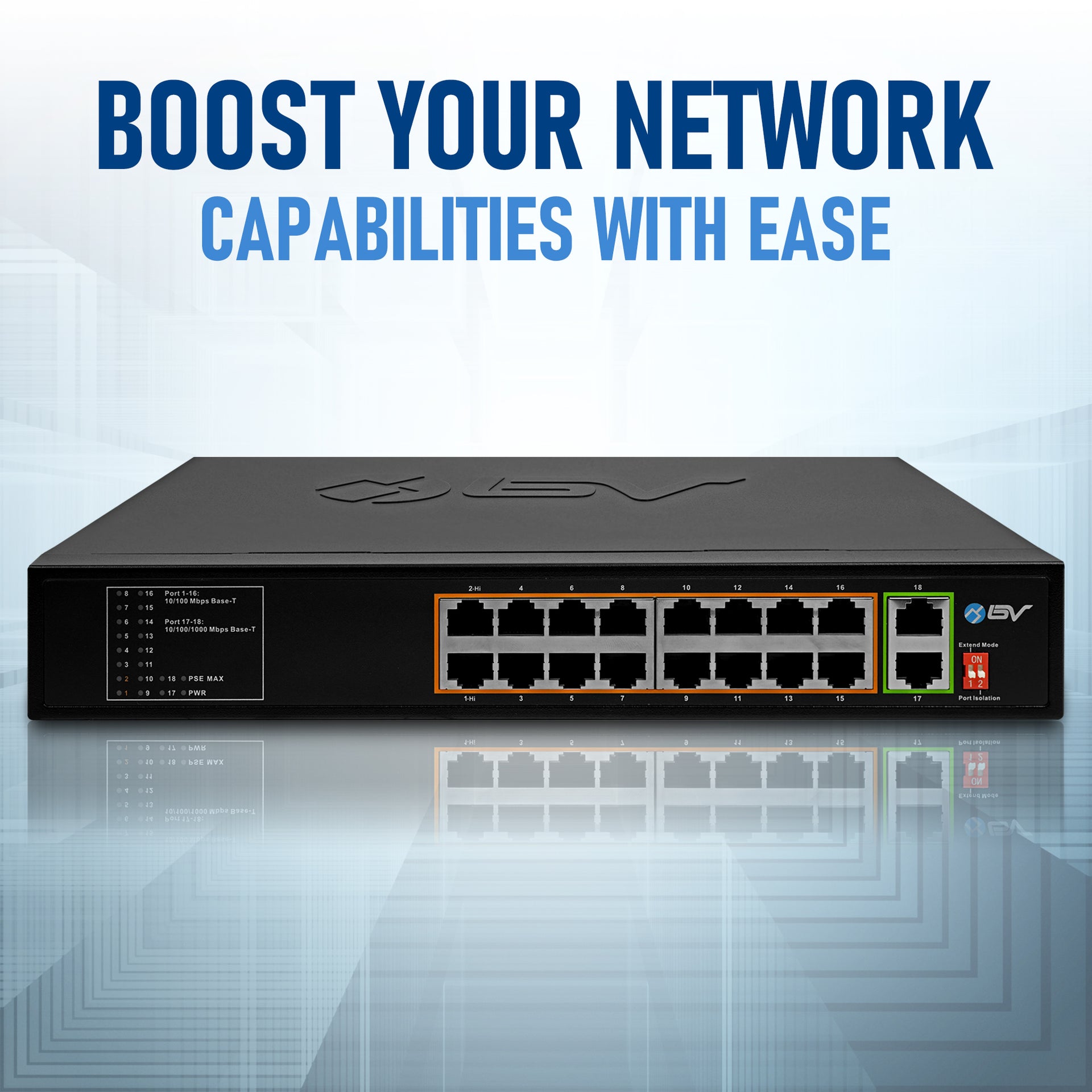
Understanding Gigabit Ethernet and SFP Uplink on POE Switch: A Guide by BV Security
Gigabit Ethernet and SFP uplink are two terms that you may have come across when researching POE switches for your network infrastructure. Both technologies play a crucial role in facilitating faster data transfer rates and enabling more efficient networking.
At BV Security, we offer a range of POE switches that incorporate Gigabit Ethernet and SFP uplink features. In this guide, we’ll delve into what these technologies are and how they can benefit your network.
What is Gigabit Ethernet?
Gigabit Ethernet is an Ethernet standard that supports data transfer rates of up to 1 Gbps, which is ten times faster than Fast Ethernet. This increased speed enables faster file transfers, video streaming, and overall network performance. In a Gigabit Ethernet network, data is transmitted over copper or fiber optic cables.
What is SFP Uplink?
SFP (Small Form-factor Pluggable) uplink is a technology that allows network administrators to extend the reach of their network beyond the switch's physical limitations. SFP uplink ports on a POE switch provide a flexible means of expanding the network by connecting to other switches, routers, or servers over a fiber optic cable. This is useful when the distance between devices is too great for traditional copper Ethernet cables.
How do Gigabit Ethernet and SFP Uplink Benefit Your Network?
Gigabit Ethernet and SFP uplink technologies provide several benefits to your network, including:
-
Faster data transfer rates: With Gigabit Ethernet, your network can handle larger amounts of data at faster speeds, enabling smoother performance for file transfers and media streaming.
-
Enhanced network capacity: SFP uplink technology allows you to extend your network beyond the physical limitations of your POE switch, providing more flexibility for expansion and scalability.
-
Better reliability: Both Gigabit Ethernet and SFP uplink technologies provide a more reliable connection, with less chance of data loss or interference, resulting in a more stable network.
At BV Security, we offer a range of POE switches with Gigabit Ethernet and SFP uplink features that are designed to meet the needs of modern network infrastructures. With our POE switches, you can take advantage of these technologies to improve your network performance, reliability, and scalability.
Conclusion
Gigabit Ethernet and SFP uplink are important technologies for modern network infrastructures, providing faster data transfer rates, enhanced network capacity, and better reliability. At BV Security, we are committed to providing high-quality POE switches with these technologies to help you build a robust and efficient network. If you have any questions about Gigabit Ethernet or SFP uplink, or would like to learn more about our POE switch offerings, please don't hesitate to contact us.
Our Products and Services:
-
PoE Switches: Explore our wide range of managed and unmanaged PoE switches and 30/60/90W injectors designed to meet your networking needs. Choose from our collection at BV Security PoE Switches.
-
Hard Drives: We are proud to partner with Western Digital (WD) to offer high-quality Purple and Purple Pro hard drives. Ensure reliable storage for your security camera systems by browsing our selection at BV Security Hard Drives.
-
Security Cameras: Discover our diverse surveillance solutions, including HD Analog cameras, IP cameras, and Network Video Recorders (NVR). Enhance your security infrastructure with our range of products available at BV Security Cameras.
-
Amazon Store: Check out our official Amazon store for easy and convenient online shopping. Explore our products and shop with confidence at BV Security Amazon Store.
For more informative content, product demonstrations, and expert tips, visit and subscribe to our BV Security YouTube Channel. Stay up to date with the latest advancements in security technology.
